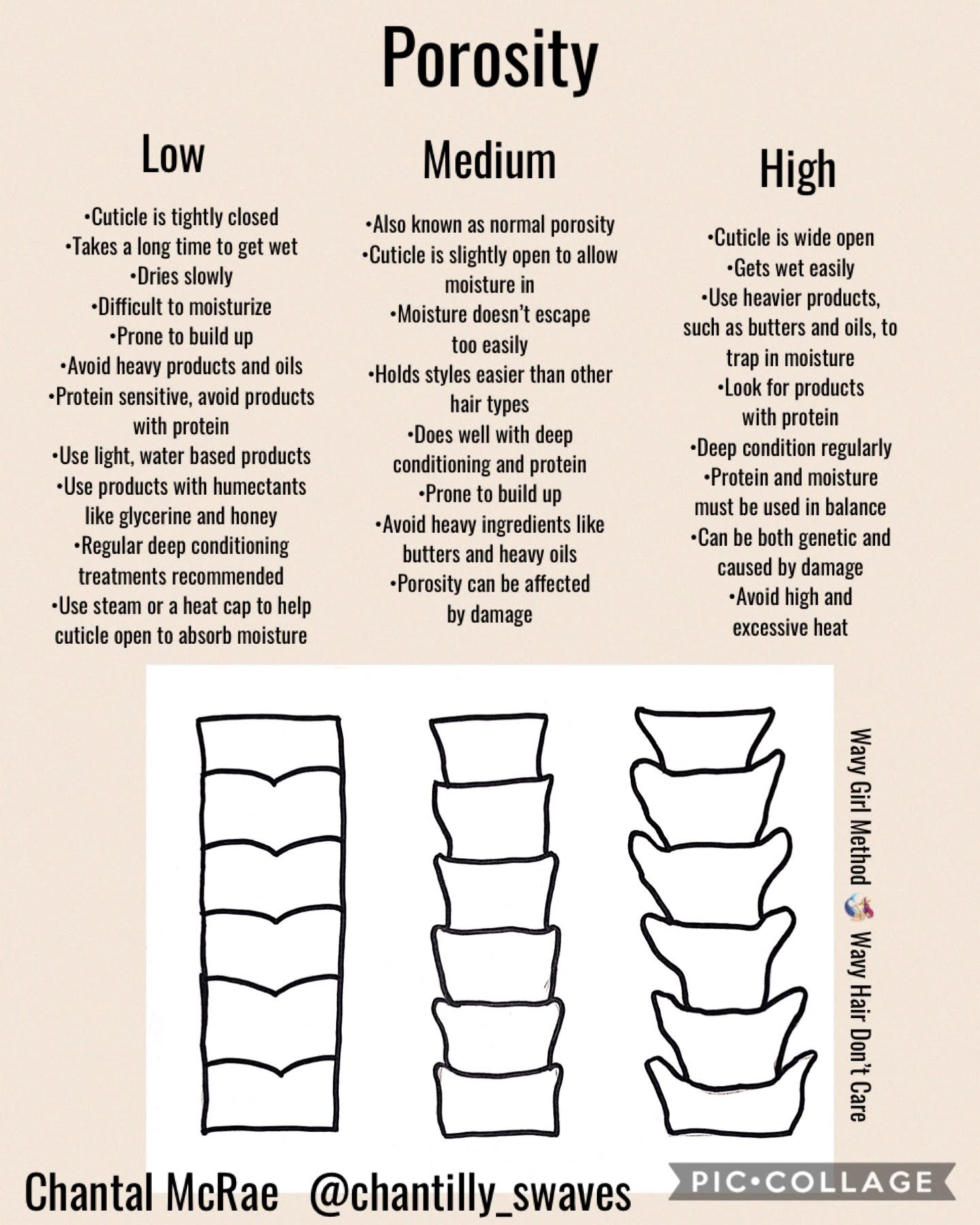How porous or absorbent your hair is has a lot to do with how it looks and can help you decide what to use on your hair to help it look it’s best. A porosity is a hole or a gap – an opening.
Hair which is porous [aka high porosity] will take on water and other chemicals easily because of all the tiny openings in the cuticle. Water gets in and out easily.
Hair which is not very porous [aka low porosity] repels water and most other fluids and this is a good thing. Water doesn't get in or out easily.
It's fairly common to have hair that is porous on the ends, but not at the roots.
What causes porosity?
Weathering of hair, mechanical stress [combing, especially brushing, tieing up, rubbing, etc.], wetting and drying, shampooing, chemical treatments, and physical structure of hair. If your hair has waves, curls or (especially) kinks (and wavy hair can be kinky hair too), it is likely to have areas on the strand which are narrow, flattened, twisted or otherwise not as strong. Even the “cuticle armor” cannot protect these areas adequately. These are prone to breakage and damage and therefore become porous easily. Wavy and curly hair is also more prone to damage from daily life simply because it has bends in it.
How to Determine Your Hair's Porosity:
This is something you learn from studying your hair by running your fingers over a hair strand, observing shine or reflectivity, how hydrated your hair feels on a daily basis, and your hair's response to products.
Normal-porous hair: It shines, maybe not quite as much as not-porous hair. It perms and takes color as expected. Your hair can be normal-porous even if you use some heat on your hair (low-heat diffusers). Normal-porous hair does not become oily-looking with reasonable amounts of conditioners or oils. Normal-porous hair may have times when it feels a bit dry, or not dry at all and it is easy to make it feel "not dry" and soft with hair conditioner and gentle care. You perceive some "soaking in" of hair products. You probably have had some exposure to the full sun, possibly chlorinated swimming pools. Your hair may be not-porous near the roots and normal-porous further down and therefore respond differently to conditioners in those two areas, which is why many people condition their hair from the ears, down. If you run your fingers up and down an individual hair, it feels mostly smooth. This normal-porous hair has cuticle scales which look like shingles on a roof. They overlap and don't stick up much.
Porous hair: If you run your fingers up and down a hair strand, it may feel bumpy and uneven due to kinking, or to damage. Quite porous hair does not shine much and though it may have some gloss, it's not "reflective" or brightly shiny. It will seem to absorb hair products of any kind, tends to feel dry most of the time and you have a difficult time getting it to feel soft and pliable. Porous hair usually takes on dye, permanent waves and chemical straightening quickly. And loses dye quickly. Porous hair loses moisture easily.
Maintain Porosity:
Avoid too much handling, tight ponytail holders, excess heat (curling or straightening irons, blowdryers without a diffuser), prolonged exposure to sunlight, chemical treatments (permanent waves or chemical relaxers), and bleaching or permanent haircoloring. Don’t rub your hair roughly with towels, tie it up tightly every day, use metal barrettes with sharp edges. Avoid brushing or combing vigorously and with force. Do detangle with care, don’t wash hair every day, use dilute shampoos or mild shampoos.
Taken from:
https://science-yhairblog.blogspot.com/2011/09/porosity-in-hair.html
https://science-yhairblog.blogspot.com/2012/06/hair-porosity-how-to-measure-sort-of.html

I thought these were spines on first glance - had me freaked out fr.
Now that you mention it, it does look like spines lmao